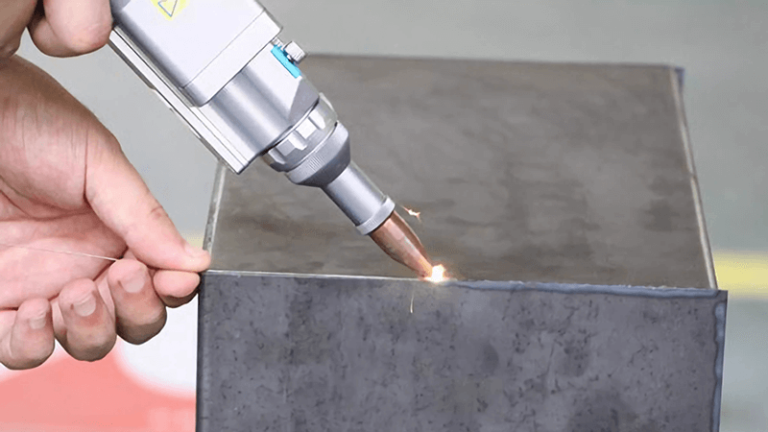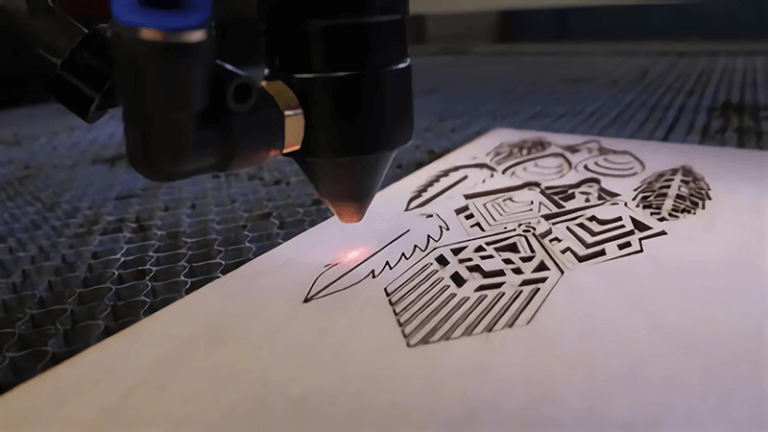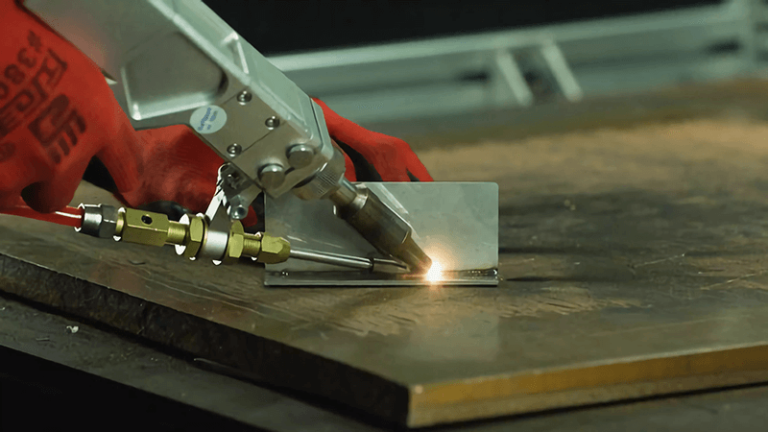Rust can turn valuable metal components into costly waste. Sandblasting and chemicals may remove it, but they also harm the surface or require complex safety procedures. Many industrial buyers ask if laser rust removal is truly better—or just a shiny new tool.
Fiber laser cleaning machines, especially pulsed ones, remove rust by vaporizing it with precise, high-intensity light bursts. They do this without damaging the base metal, making them ideal for delicate components and industrial-scale cleaning.
At Kirin Laser, we’ve seen how fiber lasers transformed surface treatment in industries like aerospace, automotive, and manufacturing. The results speak for themselves: faster cleaning, lower maintenance, and safer operation.
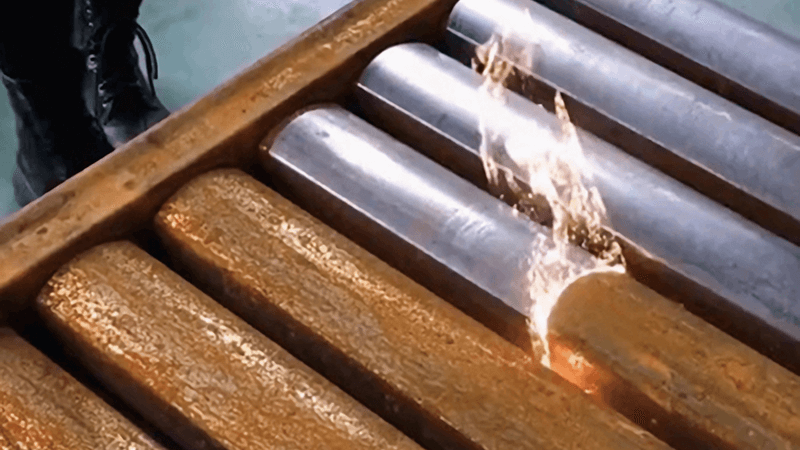
How do the lasers that remove rust work?
Rust starts when metal oxidizes. Traditional methods—grinding, chemicals, sand—strip it away along with layers of good material. Fiber lasers solve this differently. They use light, not friction, to separate rust from metal.
A fiber laser cleaning machine emits pulses of concentrated light that heat and vaporize rust layers. The beam’s wavelength is tuned to interact with oxidation, causing it to detach and evaporate, leaving the metal surface intact.
Dive deeper
The science behind fiber laser rust removal
When a pulsed fiber laser hits a rusted surface, the laser energy is absorbed by the rust (iron oxide) rather than the metal underneath. This creates rapid thermal expansion that lifts the rust off. The metal surface stays cool because fiber lasers operate in very short pulses, limiting heat transfer.
This process is called laser ablation1, and it works best with pulsed fiber lasers2 between 100W and 2000W. The rust absorbs the energy, turns into plasma, and disappears without physical contact.
Why pulsed lasers matter
Continuous lasers can overheat the base metal. Pulsed lasers deliver short, intense bursts that remove rust precisely. At Kirin Laser, our pulsed cleaning systems use adjustable pulse durations, so operators can fine-tune energy delivery depending on surface condition and thickness of oxidation.
| Laser Type | Mechanism | Best For | Risk to Base Metal |
|---|---|---|---|
| Continuous Fiber | Constant beam | Heavy rust, large surfaces | Medium–High |
| Pulsed Fiber | High-energy bursts | Precision cleaning | Low |
| CO₂ | Infrared heat | Paint stripping | High |
| Nd:YAG | Short pulse laser | General cleaning | Medium |
Our clients in the aerospace industry particularly benefit from this precision. One client struggled with rust on precision titanium brackets. After switching to our 200W pulsed fiber laser cleaner, they achieved complete rust removal without surface pitting or mechanical wear.

What happens if 200W cleaning laser runs over your hand?
This question often pops up during demos. Laser cleaning looks “gentle,” but it’s not. The energy that vaporizes rust can also damage skin instantly.
A 200W pulsed fiber laser can cause serious burns or tissue vaporization if it contacts skin. Safety interlocks, protective eyewear, and training are mandatory to avoid direct exposure.
Dive deeper
Understanding laser safety levels
Laser cleaning machines fall under Class IV3, the highest hazard level. These lasers can burn skin, ignite materials, and cause permanent eye injury—even from reflections. At Kirin Laser, every system includes safety sensors, emergency stops, and optional enclosures.
Why safety protocols matter
Operators must wear certified laser goggles4 rated for the machine’s wavelength (typically 1064 nm). We also recommend reflective barriers and warning signage. The laser should always run in a controlled environment with a fume extractor to remove metal vapors.
| Power | Risk Type | Protection Required |
|---|---|---|
| 100W | Mild skin burn, eye hazard | Basic enclosure, eyewear |
| 200W | Deep burn risk | Full PPE, enclosure |
| 1000W+ | Severe injury, ignition risk | Robot arm + enclosure |
At Kirin Laser, safety isn’t optional—it’s engineered into the design. We use interlocked doors and automatic shutoff when the beam path is interrupted. The technology is powerful, but when handled correctly, it’s extremely safe.

What type of laser removes rust?
Not all lasers can remove rust effectively. The type of laser defines how well it interacts with oxidation layers.
The best laser for rust removal is a pulsed fiber laser, using wavelengths around 1064 nm. This wavelength efficiently absorbs into rust but reflects off clean metal, ensuring selective removal.
Dive deeper
Comparing laser types for cleaning
Different lasers use different mediums—fiber, CO₂, or crystal (Nd:YAG). Each emits light at different wavelengths5, which determines how it interacts with rust.
| Laser Type | Wavelength | Absorption by Rust | Efficiency | Common Use |
|---|---|---|---|---|
| Fiber | 1064 nm | High | Excellent | Rust, oil, oxide |
| CO₂ | 10.6 μm | Low | Poor | Paint, plastics |
| Nd:YAG | 1064 nm | Moderate | Good | Multi-material cleaning |
Fiber lasers are superior for metals because they offer higher beam quality and efficiency. They also have lower maintenance needs and better cooling systems.
Why Kirin Laser chooses pulsed fiber technology
Our cleaning machines are built with JPT or Raycus pulsed fiber sources6. They deliver adjustable frequency and power control, allowing precise cleaning without overexposure. In industries like aviation and energy, where parts are costly and tolerances are tight, this precision makes all the difference.
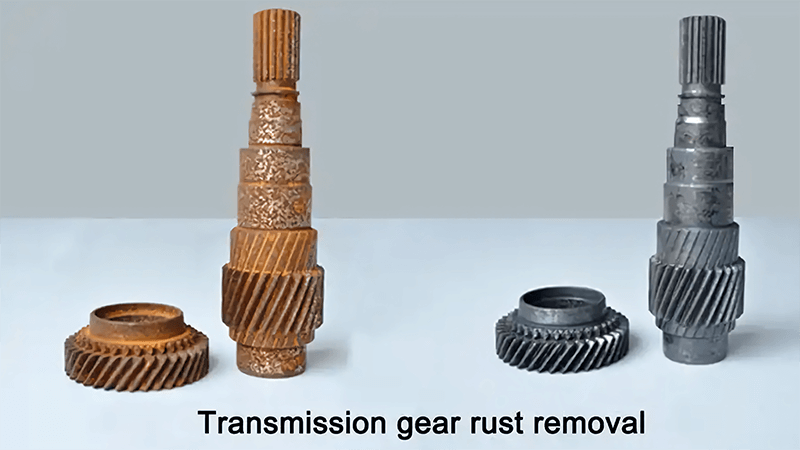
How powerful does a laser need to be for rust removal?
Power isn’t just about wattage—it’s about energy per pulse. Too weak, and rust won’t vaporize. Too strong, and you risk etching the metal.
For effective rust removal, a 100–500W pulsed fiber laser is ideal. The right power depends on rust thickness, surface area, and desired cleaning speed.
Dive deeper
Matching laser power to the job
For light rust or delicate parts, 100–200W7 is sufficient. For heavy oxidation on machinery, 500–1000W delivers faster results. At Kirin Laser, we recommend starting low and increasing until the oxide layer lifts cleanly.
| Application | Ideal Power | Surface Type | Notes |
|---|---|---|---|
| Precision tools | 100W | Stainless steel | Avoid overheating |
| Automotive frames | 200–300W | Carbon steel | Best for production lines |
| Marine equipment | 500–1000W | Thick corrosion | Requires fume extraction |
The role of beam control
Power isn’t everything. Beam focus, scanning speed, and frequency settings also determine results. Our machines use galvo heads for fast scanning and real-time feedback, ensuring even cleaning without hot spots. Operators can adjust beam diameter and overlap to match the surface geometry.
The aerospace client8 mentioned earlier used a 200W system on nickel-titanium components. The result: complete rust removal in under 20 seconds, zero surface damage, and reduced prep time by 70%.
What is the best method to remove rust?
Each method—chemical, mechanical, or laser—has trade-offs. For industrial users, efficiency, safety, and surface quality decide the winner.
Laser cleaning is the best method for rust removal when precision, environmental safety, and material integrity are priorities. It uses no chemicals, no abrasives, and produces minimal waste.
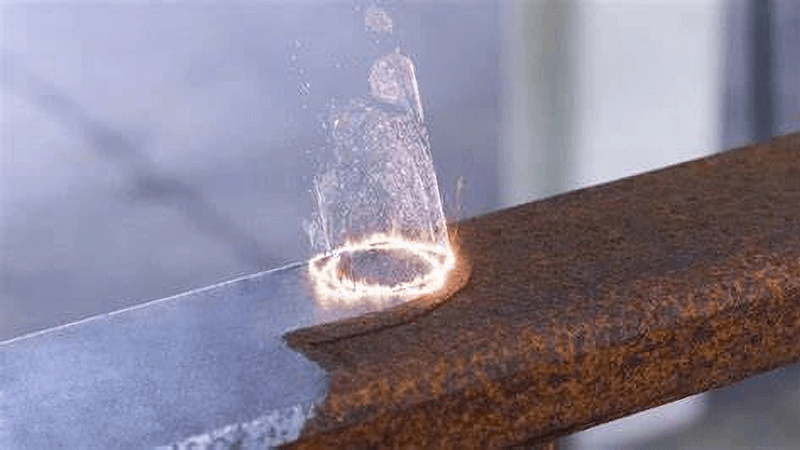
Dive deeper
Comparing major rust removal techniques
| Method | Process | Surface Impact | Safety | Cost Over Time |
|---|---|---|---|---|
| Sandblasting | Abrasive erosion | Damages surface | Dust hazard | Medium |
| Chemical cleaning | Acid reaction | May corrode base | Chemical risk | High |
| Manual grinding | Friction | Uneven, scratches | Labor risk | Low |
| Laser cleaning | Light ablation | No damage | Safe, clean | Low (long term) |
Laser cleaning9 stands out for sustainability and precision. There are no solvents, no secondary waste, and minimal operator fatigue. It also integrates easily into robotic lines, enabling automated cleaning in factories.
Kirin Laser’s approach to industrial cleaning
At Kirin Laser10, we design machines that balance portability and power. Our handheld models are perfect for on-site maintenance, while our robotic cleaning systems fit automated production. We provide OEM-ready systems for global distributors who need private-labeled solutions with technical support and documentation.
In short, laser cleaning doesn’t just remove rust—it modernizes how industries handle maintenance and restoration.
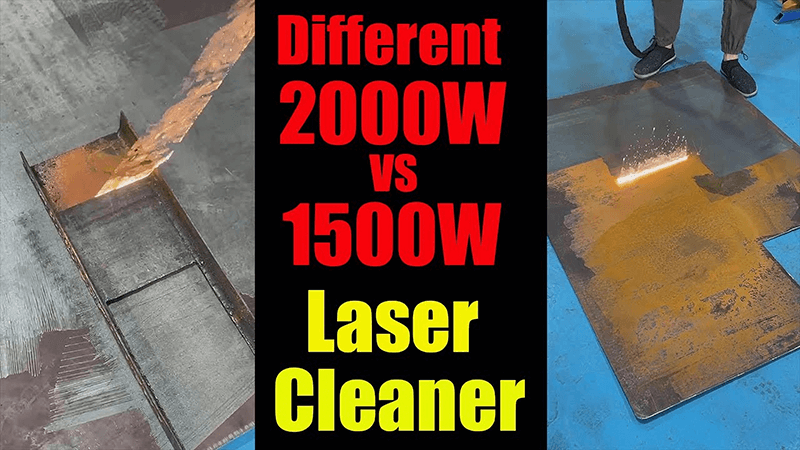
Conclusion
Fiber laser rust removal11 is not hype—it’s the next step in industrial surface treatment. Pulsed fiber lasers clean without touching, scratching, or polluting. They restore metal to its original condition with unmatched precision. At Kirin Laser, we’ve seen it transform workflows across aerospace, automotive, and heavy manufacturing. If you want to move from abrasive to adaptive cleaning, fiber lasers are the cleanest way forward.
-
Understanding laser ablation can enhance your knowledge of advanced cleaning technologies and their applications. ↩
-
Exploring pulsed fiber lasers will provide insights into their efficiency and precision in various industrial applications. ↩
-
Understanding Class IV laser safety is crucial for operators to prevent serious injuries and ensure a safe working environment. ↩
-
Exploring the importance of laser goggles can help you understand their role in protecting against eye injuries during laser operations. ↩
-
Understanding how different wavelengths interact with rust can help you choose the most efficient laser cleaning technology for your needs. ↩
-
Discover why JPT and Raycus pulsed fiber lasers are preferred for precision cleaning in high-stakes industries like aviation and energy. ↩
-
Explore this link to understand how 100–200W laser power can effectively remove rust from delicate parts without causing damage. ↩
-
Discover how an aerospace client efficiently removed rust from nickel-titanium components using a 200W laser, achieving zero surface damage and saving prep time. ↩
-
Explore the advantages of laser cleaning, including sustainability and precision, to modernize your maintenance processes. ↩
-
Discover Kirin Laser's innovative machines and systems that enhance efficiency and support for industrial cleaning needs. ↩
-
Find the best laser cleaning machine and laser cleaning solutions from Kirin Laser, clicking this link to get all your need for business. ↩


